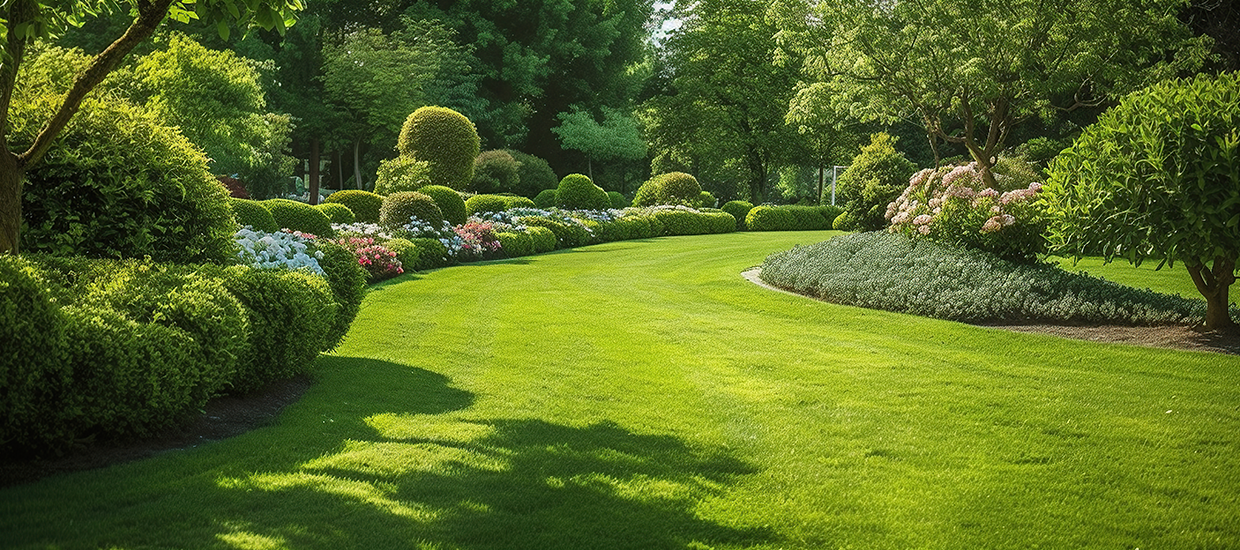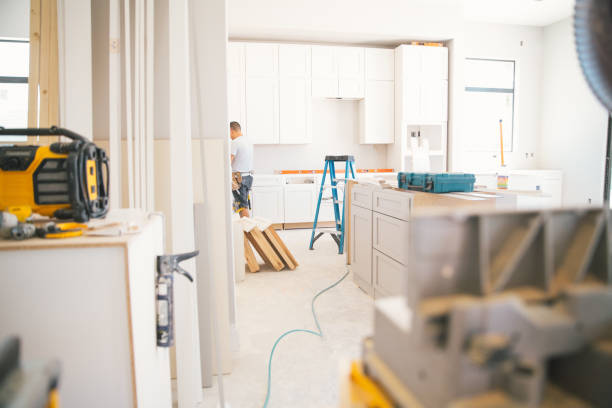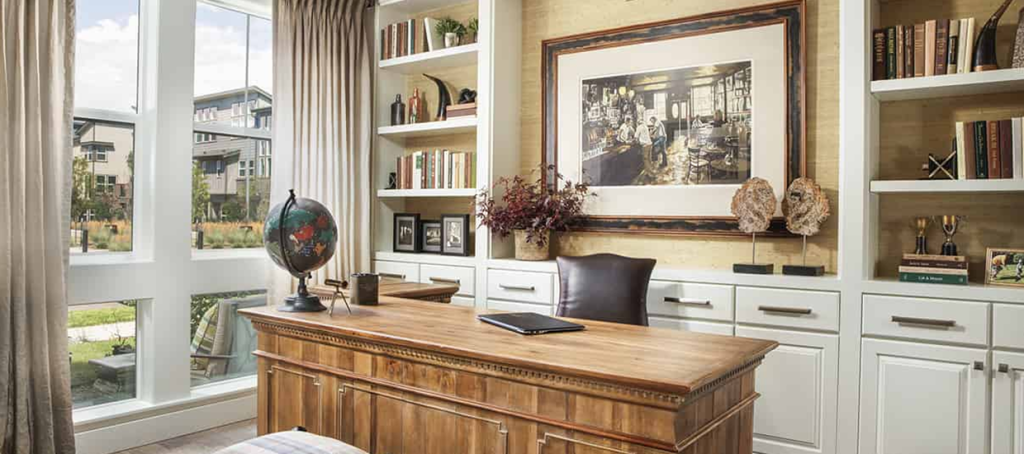Selling soon or just tired of a worn-out yard? If you want helpful insights about Home Improvement, this blog helps to turn outdoor space into comfort, style, and value. Many people ask the same question: Does landscaping increase home value? The short answer is yes—when you plan it well and keep it tidy. This simple blog shows you how to get there without stress. Let’s first define what landscaping includes and why it matters
According to real estate studies, landscaping can add up to 15% to a home’s value. Buyers notice your yard before they step inside. So, does landscaping increase home value? Yes — and here’s why.
What Landscaping Means And Why It Matters For Home Value
Yes. When your yard looks neat and friendly, people believe your home is easy to own. Buyers start judging the second they see the front. Because of that, curb appeal shapes what they expect inside. With a smart mix of plants, lights, and paths, plain ground turns into a warm, low-work space. Also, smart choices like drip watering and shade trees can lower bills over time.
Even small fixes like fresh mulch, clean edges, and a quick prune can change how your home feels in photos and in person. As a result, your pictures look brighter, your place feels “move-in ready,” and more buyers want to visit. Studies show that landscaping ROI can reach over 100% when homeowners focus on lawn care, trees, and simple upgrades.
Understanding Landscaping Before Talking Value
Landscaping means planning, building, and caring for the area around a home so it looks good, works well, and is easy to maintain. It has three main parts:
- Softscape: living things like grass, trees, shrubs, flowers, and groundcovers.
- Hardscape: built parts like paths, patios, steps, rocks, edging, decks, and fences.
- Care & systems: watering (sprinklers or drip), mowing, trimming, feeding the soil, fixing drainage, and adding lighting for safety.
A good landscape:
- Fits the house style (modern, cottage, ranch, etc.).
- Matches the site (right plants for your sun, soil, and water).
- Keeps views clear (you can see the front door and house numbers).
- Feels safe day and night (solid paths, gentle lights, no tripping hazards).
- Uses resources wisely (less water and energy, better rain control).
Why it matters: Landscaping improves curb appeal, creates an outdoor living space, lowers utility costs, and makes your property feel well cared for. These benefits directly increase landscaping ROI, so the answer to “Does landscaping increase home value?” is almost always yes. Strong curb appeal also helps buyers form a positive impression before entering.
Why Exterior Look Matters Most
We often hear that first impressions last, and it applies here. A tidy lawn, trimmed shrubs, and a clear, bright path tell a simple story: “This home is loved.” Small, low-cost upgrades—mulch, neat borders, and clipped hedges—show up well in photos and set the right tone at showings. The return on landscaping investment is highest with low-maintenance features like native plants, mulch, and LED path lighting.
But landscaping curb appeal is not about spending the most. Instead, it’s about a calm look from street to door, so nothing fights for attention. When the outside feels clean and easy, buyers expect the same inside.
Landscaping Features With The Highest ROI
When selling your home or making it look amazing, ask which landscaping projects pay off most at sale. Let’s look at the top landscaping features that give you the biggest return on investment and instantly make your home more inviting. Sellers often search for what landscaping adds the most resale value, and the answer usually includes lawns, trees, and lighting.
1) Lawn Health And Edges
A green, even lawn frames the house and makes everything else look better. Mow at the right height, feed each season, and keep edges crisp. Moreover, if water is tight where you live, try a drought-tolerant blend or micro-clover that stays soft and green with less care.
2) Trees For Shade, Privacy, And Scale
Well-placed trees cool rooms, add privacy, and make the house feel settled on the lot. Pick kinds with friendly roots and a size that fits your space. Then, set them to shield the hot west walls and frame the front—don’t hide it.
3) Beds That Bloom All Year
Build beds that have something nice in each season. Use evergreens for shape. Then layer perennials and a few annuals for pops of color. Repeat a small set of plants and stones so the yard looks peaceful, not busy.
4) Lighting For Safety And Glow
Soft path lights and warm wall lights make nights safer and nicer. You can choose low-voltage or solar kits that go in fast and use little power. Aim lights downward so guests see the path clearly without glare.
5) Hardscape That Connects Spaces
Pavers, stepping stones, and small patios tell people where to walk and gather. This turns the yard into simple “rooms” for eating, reading, or playing. The whole place also feels bigger and more useful in photos and in person.
Quick Wins You Can Do This Weekend
- Spread fresh dark mulch (about 2–3 cubic feet per 100 square feet) to boost color and block weeds.
- Cut a clean spade edge around beds; it looks like a pro did it.
- Swap tired annuals for tough perennials at the mailbox and entry.
- Add two shielded path lights on each side of the walk for safer steps.
- Pressure-wash the walkway and steps to lift stains and slime.
- Trim shrubs below window sills so more daylight reaches rooms.
Small Budget, Big Impact
| Upgrade | Typical Cost | Upkeep | Why it helps |
| Bed mulch + edging | Low | Low | Sharp photos, fewer weeds, “finished” look. |
| LED path lighting | Low–Medium | Low | Safer nights and stronger curb appeal. |
| Native perennials | Low | Low–Medium | Less water, long bloom, supports pollinators. |
| Stepping-stone path | Medium | Low | Guides movement and protects turf. |
DIY Or Hire A Pro?
It depends on your time and comfort level. Simple tasks—like mulching, edging, weeding, and swapping a few plants—are easy DIY wins. However, grading, drainage, irrigation, and stonework are better left to professionals since mistakes in these areas can be costly. A skilled landscaper can also create a step-by-step plan you can build over time. Start with water management, then add plants, and finish with lighting. For many sellers asking, “Does landscaping increase home value?” the answer shows in quicker offers and fewer days on the market. Even small projects such as edging, mulching, and trimming are proven landscaping ideas that help homes sell quicker and often for more money.
Design Rules That Always Work
Match the home. Use plant shapes and materials that fit your house. Clean lines pair well with modern homes. Softer layers fit cottages and bungalows. Put the right plant in the right place. Sun, soil, wind, and water matter greatly, so choose plants that like your conditions. Layer tall, medium, and low plants so beds have depth without blocking windows. Therefore, keep lines of sight open to the front door and house numbers. And repeat colors and materials so the yard feels calm and planned.
According to the National Association of Realtors, landscape upgrades rank among the top five projects for resale ROI.
Four Common Situations
Every home is different—here’s how landscaping adds value in four everyday situations.
I. Selling Soon With Little Time
Clean, edge, mulch, prune, and wash the path. Add two large, matching pots by the door. Done.
II. Staying Five Years
Add drip zones, plant one or two shade trees, and feed the soil with compost. Because of that, you’ll water less and relax more.
- Small Lot Or Townhome
Go vertical with slim trees and trellised vines to gain privacy without losing floor space. Add gentle lights on rails and steps so tiny patios work at night.
IV. Dry Or Drought-Prone Area
Trade thirsty turf for gravel bands, native grasses, and drip lines. Group plants by water needs and hide tubing under mulch for a neat look.
Low-Maintenance Landscaping Upgrades That Boost ROI
Soil comes first. Use slow-release fertilizer so roots grow deep and plants stay strong. Next, focus on smart watering. Weather-sensing timers and drip lines save water while keeping patios free of spray. Solve drainage issues early. Use swales or simple French drains to move water away from the house and paths. Finally, keep a clear seasonal care plan so maintenance stays simple for you and future owners.
Mistakes That Lower The Value
- Planting so much that windows, doors, or the house number get blocked.
- Adding high-work features buyers read as chores, like big ponds or fussy hedges.
- Mixing too many stone colors or styles so nothing matches the house.
- Ignoring local water rules or HOA guides.
- Using large artificial turf areas in full sun can feel too hot.
- Pointing lights into the street or at neighbor windows.
How To Plan And Spend In The Right Order
Initially, take photos from the street and each main window. Spot the pain points: privacy gaps, soggy spots, or dark steps. Next, fix water and safety before you plant: drainage, leaks, and basic night lighting. Then choose a small set of plants and two hardscape materials so the look stays simple. After that, build in phases: start with the curb and entry, then side paths, and finish with the backyard. Finally, write down care steps so future owners see an easy hand-off, not a to-do list.
Your Area, Your Plan
Because climate and rules differ, tune your choices to your region. In humid places, keep air moving near the house and pick disease-resistant plants. In dry places, lean on gravel, native grasses, and drip irrigation. Furthermore, save roof water in a barrel and send overflow to a shallow swale that feeds trees. If freezes hit, choose hardy plants and avoid soggy beds near walks where ice can form. And always call before you dig so you avoid buried lines.
What Will It Cost?
Here are three helpful tiers to match a plan to your budget.
- A Refresh (about $200–$800) covers cleanup, mulch, edging, spot seeding, and two entry pots. It looks much better in a single weekend.
- An Upgrade ($1,500–$6,000) might add path lights, a small paver patio, native perennials, and one shade tree. Upkeep drops, and the yard feels more useful.
- A full Rework ($8,000–$30,000+) fixes drainage, adds smart irrigation, upgrades planting, and ties spaces together. While it costs more, the yard becomes an extra room you use daily, and buyers notice.
| Landscaping Upgrade | Avg. Cost | Added Home Value | ROI % |
| Lawn care & edging | $300–$800 | $1,000–$2,000 | 250%+ |
| New trees (shade/privacy) | $500–$3,000 | $1,500–$7,000 | 150%+ |
| Patio/paver addition | $2,000–$6,000 | $3,000–$8,000 | 100%+ |
Winter And Off-Season Value
You can still look great in cold months. Lean on evergreens for shape, keep beds neat, and use lighting for warmth. Even without flowers, strong lines—hedges, paths, steps, and a clean, welcoming door—carry the look. Therefore, add one or two planters with hardy evergreens to frame the entry and brighten photos on gray days.
FAQs
Does landscaping add value to every home?
Yes, almost every home benefits from a neat and well-kept yard. Even small upgrades improve curb appeal and buyer interest.
Is it better to DIY landscaping or hire a pro for ROI?
DIY works well for simple tasks like mulching and pruning. For drainage, stonework, or design, a pro ensures lasting value.
How much should I budget for landscaping before selling?
Plan on 1–5% of your home’s value, adjusted to your market and goals. Even a few hundred dollars can create a strong impact.
And if you are still wondering, does landscaping increase home value? Remember that buyers shop with their eyes and hearts.
Action Plan
So, does landscaping increase home value? Yes—when you keep things simple: manage water well, protect clear views, and carefully layer plants. Start with a clean slate, fix drainage and safety, then add paths, plants, and warm light. Because each step supports the next, your yard feels easy to use and love—the two traits buyers will pay for.
Your Landscaping Value Solution
Done right, landscaping is one of the few projects where homeowners often see full ROI or more, making it a smart choice before selling.
- Fix water and safety issues first.
- Focus on curb appeal upgrades (mulch, edges, lighting).
- Add trees and perennials for long-term value.
- Keep the design simple and easy to maintain.
- Match scope to budget: Refresh, Upgrade, or Full Rework.
Keep a short care guide for the next owner; they will see a gift, not a chore list. And when you want a simple plan to follow, a Home Improvement guide can give you step-by-step ideas that fit your budget and neighborhood











